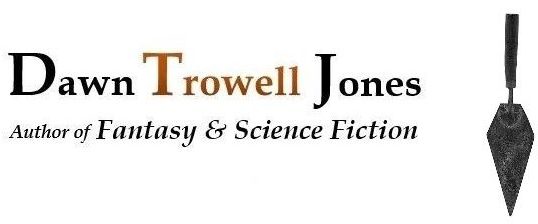 I recently read The Forgetting Machine: Memory, Perception, and the ‘Jennifer Aniston’ Neuron (2017), recommended to me by a reader of my last post, in which neuroscientist Rodrigo Quian Quiroga talks about how our brains gather and store information. And this, I believe, may also reflect how fiction works.
I recently read The Forgetting Machine: Memory, Perception, and the ‘Jennifer Aniston’ Neuron (2017), recommended to me by a reader of my last post, in which neuroscientist Rodrigo Quian Quiroga talks about how our brains gather and store information. And this, I believe, may also reflect how fiction works.
Quiroga begins with an example. The human eye picks up highly detailed information from only a tiny area at the back of the eye called the fovea. To know how small a portion of our field of vision that is, Quiroga tells us to hold out our arm and look at our thumb: an area the size of our thumbnail is the extent of how much we perceive “well” at any given moment. Saccades, the rapid shifting of the eye, let us scan quickly while our memory fills in the rest with expected information. If we look at a table, he says, we never truly “see” an entire table. We scan and note its corners, maybe some scuffs, but we’ll skim over the parts that fit what our memory says a table is supposed to look like. The details of the smooth surface in the middle are never truly “seen.”
 The act of seeing is a way to take in information, but we tend to rely on these same efficiencies when we store information in memory, says Quiroga, glossing over information that’s consistent with norms. He likens this glossing-over process to forgetting. We’ve seen this in the legal system in the notorious unreliability of witness testimony. The reason for this, as I understand it, is that what’s salient to one person isn’t necessarily salient to another, and for each individual, certain assumptions may be joined unconsciously. An eyewitness may correctly recognize a factor or trait as having been present and store it in memory, but in the process, other remembered straits may be “triggered” that were not in fact present. This is bias. As a result, Quiroga says, since we only store a portion of what we actually perceive, and we only perceive a portion of reality, leaving the brain to fill in the rest with associated memories, eyewitnesses will sometimes believe quite strongly that false memories are real.
The act of seeing is a way to take in information, but we tend to rely on these same efficiencies when we store information in memory, says Quiroga, glossing over information that’s consistent with norms. He likens this glossing-over process to forgetting. We’ve seen this in the legal system in the notorious unreliability of witness testimony. The reason for this, as I understand it, is that what’s salient to one person isn’t necessarily salient to another, and for each individual, certain assumptions may be joined unconsciously. An eyewitness may correctly recognize a factor or trait as having been present and store it in memory, but in the process, other remembered straits may be “triggered” that were not in fact present. This is bias. As a result, Quiroga says, since we only store a portion of what we actually perceive, and we only perceive a portion of reality, leaving the brain to fill in the rest with associated memories, eyewitnesses will sometimes believe quite strongly that false memories are real.
As I understand it, then, memory is mostly a collection of associations rather than specifics. According to Quiroga, we don’t retain nearly as much information about the real world as we think we do.
 This patterned way of thinking is perfect for generating high-concept analogies, though, and analogies are a storyteller’s bread and butter. When a story plays to our expectations, we’re able to relate to it; we internalize it. When a story plays against expectations—situations, dialogue, or physical appearances (aka, irony)—the reader will interpret it as something new, significant, and worthy of attention. Top-notch trial attorneys rely on familiar narratives to sway juries, like the classic argument for self-defense: “It was either him or me.”
This patterned way of thinking is perfect for generating high-concept analogies, though, and analogies are a storyteller’s bread and butter. When a story plays to our expectations, we’re able to relate to it; we internalize it. When a story plays against expectations—situations, dialogue, or physical appearances (aka, irony)—the reader will interpret it as something new, significant, and worthy of attention. Top-notch trial attorneys rely on familiar narratives to sway juries, like the classic argument for self-defense: “It was either him or me.”
We could add a deep scratch straight down the center of our imaginary table and have instant drama! Oh, no! A scratch shouldn’t be there. How did it get there? Whose table is it? As I start to wonder, I really start to care about this table and how the scratch got there, because I’ve experienced damaged furniture myself and wasn’t too happy about it. So, I’m drawing on my own memories here. We have the beginnings of a plot, or to put it in Quiroga’s terms, the table has become significant because of its scratch. But a storyteller must stick to what’s relevant to the story, of course. A story “about” a table and its scratch could potentially veer far and wide, but the strands of story must always point back to the table and its scratch.
By the end, but likely way before then and more than once, a story must “come back to center.”
Perhaps it’s fair to say that memory is as much about retrieval as storage, the retrieval of what we know. In physicist Michael Polanyi’s The Tacit Dimension (1966), Polanyi’s basic position is that it’s impossible to get to the root of what we know. Any of it. All knowledge is hierarchical and emergent, he says, and whenever we focus on its underlying particulars, we shatter that knowledge. What does “shatter” look like? He gives the example of when we recite a familiar word over and over again: it eventually sounds like nonsense because the word has lost its meaning. When we use language, we communicate with words, but words are concepts we associate with other concepts. It’s these associations that are at the root of higher-ordered thought. Polanyi claims it’s technically impossible for even scientists to demonstrate what they know because they’re working with language and concepts that have been built up throughout the evolution of civilized humanity.
I’d just finished both of these books when I began reading Martha Wells’s Network Effect, the last installment of her wonderful Murderbot Diaries.
 As plot goes, the stories are pretty straightforward. What really stands out for me is Wells’s use of language and how she takes perfect advantage of a security android’s character to get away with unusual feats of storytelling. To Murderbot, the mundane is exotic, while violent clashes with its enemy targets are routine. The mundane is made important while it’s interwoven with scenes of intense action.
As plot goes, the stories are pretty straightforward. What really stands out for me is Wells’s use of language and how she takes perfect advantage of a security android’s character to get away with unusual feats of storytelling. To Murderbot, the mundane is exotic, while violent clashes with its enemy targets are routine. The mundane is made important while it’s interwoven with scenes of intense action.
One of the pieces of advice authors are given is to be specific with nouns and verbs, but this can be taken too far and start to feel like the author wants to exert too much control over the reader’s associations. Wells plays it the other way, masterfully, by using simple, high-concept language. I got to learn how Murderbot thinks. The result is totally immersive. By focusing on what’s meaningful to Murderbot (what deviates from its norm) during moments of high stress (because it’s an android, it can think much faster than humans), I was able to infer an entire reality particular to it. Normally, an author wouldn’t dare disrupt an action sequence with sidebar, but it works here because of who Murderbot is. The novel is built around action sequences, one after the other, but because of the mundane aspects, which are not mundane to Murderbot, I hardly noticed, except for a compulsion to know what happens next. This is brilliant writing, and because of it, the entire feel of the book is a kind of different territory. A real pleasure.
Stories present us with a stylized reality on top of our already stylized reality. In my opinion, the Murderbot Diaries is a story about an unusual mind and how that mind relates to its external reality, through the lens of an android’s perceptions, associations, and meaning constructs, and interestingly, even what it forgets.

